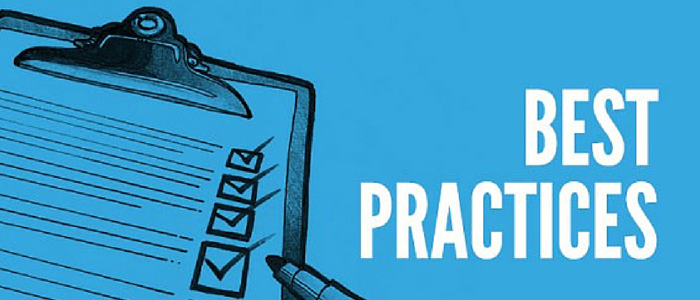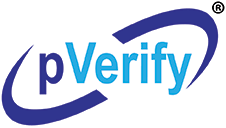
6 Patient Eligibility Verification Best Practices
Patient insurance verification is becoming an indispensable process when it comes to billing patients, getting paid by insurance providers, and the overall management of practices’ revenue cycles. With the rise in high-deductible and cost-sharing insurance plans, more and more patients are required to make payments at the time of service, though many patients are unaware of that fact.
Eligibility verification using healthcare APIs—particularly when done in advance—solves this problem, allowing you to give important information to your patients before their appointments. Below are 6 patient insurance verification best practices that you can use to make sure your processes are as effective as possible.
1. Find the Right Verification Method
First off, every practice has unique needs, as well as resources, when it comes to eligibility verification. While more traditional practices like calling or faxing patient information to insurance providers might work for some smaller practices, other high-volume practices might find that tedious and time-consuming.
Other alternatives, as discussed in this article, include:
- Carrier Portals, which are databases hosted on providers’ websites
- Clearinghouse Systems, databases hosted on third-party websites
- Integrated Solutions, which are integrated into your practice management software
- Outsourcing, hiring a third-party to run eligibility tests for you, or purchasing verification automation software
- Inclusive Software Solutions, like pVerify, that offer a web-based Portal, Outsourced Batch Processing, hybrid software Integrations, and healthcare API White-labeling.

Regardless of which patient insurance verification method you currently have, it’s important to ask yourself what your needs and resources are, and if there’s a better solution out there for you.
2. Verify Eligibility at the Right Time(s)
In addition to finding the right patient insurance verification method for your practice, it’s also important to make sure that your staff is verifying patient eligibility at the right time(s) and to set a schedule for routine batch verifications. Though your practice should find a schedule that is right for your staff and your needs, there are a number of occasions that are typically recommended for eligibility tests.
Best times for eligibility verification:
- When appointments are scheduled
- 2-3 days before actual appointments
- After the appointment, if needed
- Every month or so (batch)
Learn more in our post: When Should I Verify Patient Eligibility?
Verifying patient eligibility during scheduling allows you some time to clear up any mistakes or gaps in coverage before the patient comes into your practice, which eliminates the awkward possibility of explaining why the physician can’t see the patient. It’s also recommended that you double-check their insurance information when they come in, as insurance plans can change in the matter of just a few days.
3. Save Verification Information
Additionally, after you verify patient eligibility, save the information. Keep a record of the date and time you called the provider, or went to their website, as well as patient and staff information. Being proactive like this will prepare you for the unfortunate and annoying event of a dispute between you and a patient’s provider.
If you outsource your verification processes or use automated verification software, make sure your vendor or software application saves this information. When insurance eligibility software maintains a history of previous verifications, it can save you manual effort and ensure accurate record-keeping.
4. Calculate Patient Financial Estimation
After you verify eligibility, use the information provided by the patient’s insurance provider, as well as your practice’s contracted rates, to calculate a price estimate for your patients. Just as with verifying eligibility, the sooner you can offer this patient financial estimation the better.
If you provide estimates, your patients won’t be caught off guard when you ask to collect a payment—so it’s recommended you provide them when scheduling appointments. Many automated verification software platforms will also do this step for you, saving your staff the time and brainpower, like the Patient Financial Responsibility Estimator.
5. Reiterate Payment Responsibility at Check-In
Nine in 10 patients report that they would like to know their payment responsibility upfront. If you get your staff into the habit of verifying eligibility and calculating price estimates for patients over the phone when scheduling appointments, it’s still important to reiterate their payment responsibility at check-in, and to remind them what copay they need to provide, for example.
Your practice should also have a written patient payments policy accessible to patients, either in the office or on your website, that can answer patients’ billing-related questions.
6. Reassure That Verification is to Help the Patient
If you’re faced with any objections when requesting patient insurance information over the phone (or even at the front desk), ensure the patient that you’re gathering the information to benefit them. Inform them that by receiving the information up front you can make the process of dealing with the insurance providers smoother, you can provide them with an estimate, and you can make sure they receive their full benefits. (The nice part is that while this is true, in-advance eligibility verification also helps you.)
Improve Your Eligibility Verification Process with pVerify
pVerify is the leader in All-Payer Realtime Patient Insurance Eligibility Verification with Instant, API and Batch Solutions that blend technology with human-enabled AI to simplify the complex landscape of the patient care cycle.
We focus on value-added solutions for ambitious health and wellness providers. We shine in the industry for unparalleled hands-on support, excellent development tools, and a pre-and post-development foundation unrivaled as a service-oriented partner— NOT just another technology company.
Discover how pVerify can enhance your patient eligibility verification process—contact us and schedule a demo today.


